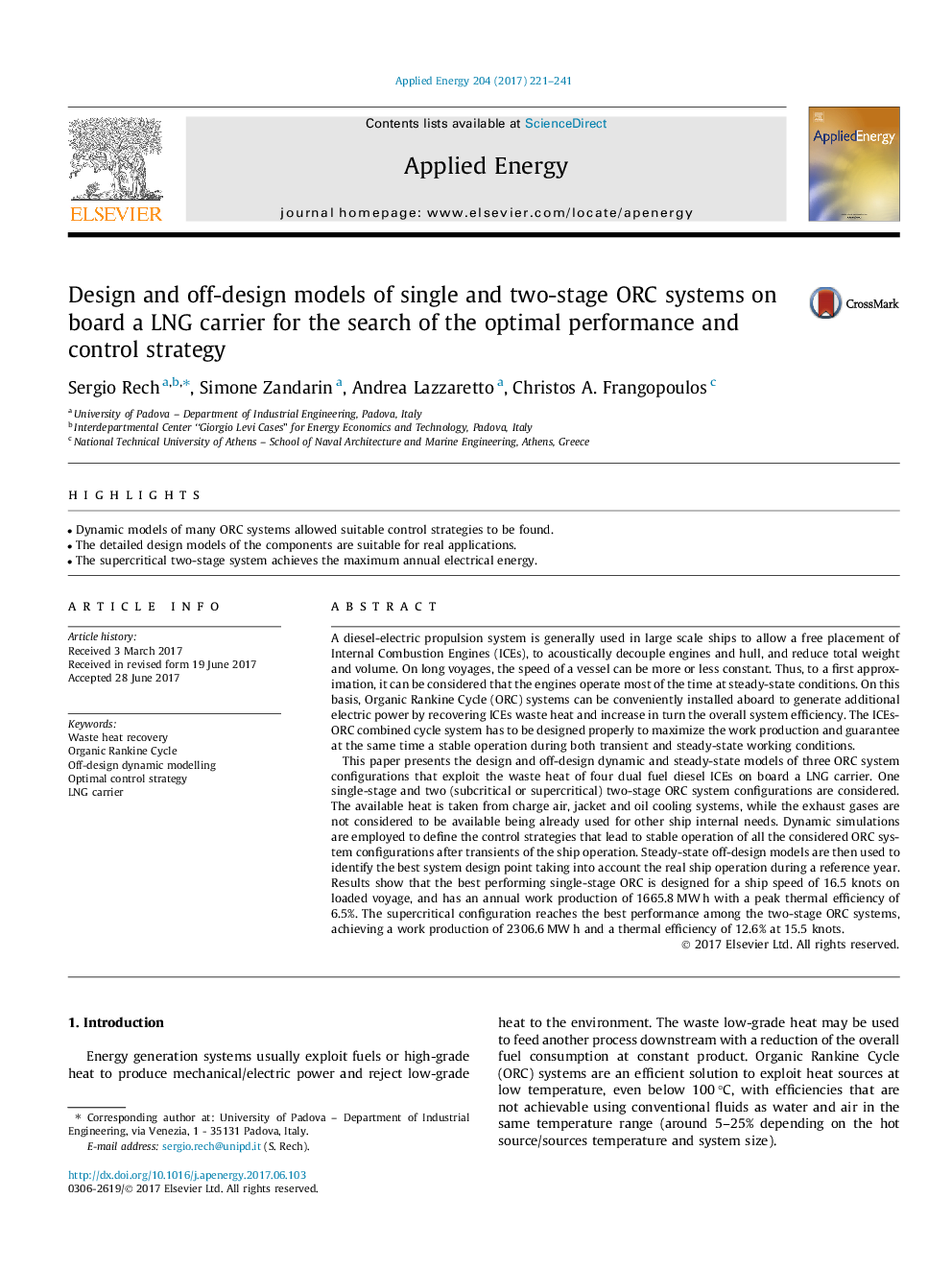| Article ID | Journal | Published Year | Pages | File Type |
|---|---|---|---|---|
| 4916049 | Applied Energy | 2017 | 21 Pages |
Abstract
This paper presents the design and off-design dynamic and steady-state models of three ORC system configurations that exploit the waste heat of four dual fuel diesel ICEs on board a LNG carrier. One single-stage and two (subcritical or supercritical) two-stage ORC system configurations are considered. The available heat is taken from charge air, jacket and oil cooling systems, while the exhaust gases are not considered to be available being already used for other ship internal needs. Dynamic simulations are employed to define the control strategies that lead to stable operation of all the considered ORC system configurations after transients of the ship operation. Steady-state off-design models are then used to identify the best system design point taking into account the real ship operation during a reference year. Results show that the best performing single-stage ORC is designed for a ship speed of 16.5 knots on loaded voyage, and has an annual work production of 1665.8Â MWÂ h with a peak thermal efficiency of 6.5%. The supercritical configuration reaches the best performance among the two-stage ORC systems, achieving a work production of 2306.6Â MWÂ h and a thermal efficiency of 12.6% at 15.5 knots.
Related Topics
Physical Sciences and Engineering
Energy
Energy Engineering and Power Technology
Authors
Sergio Rech, Simone Zandarin, Andrea Lazzaretto, Christos A. Frangopoulos,
